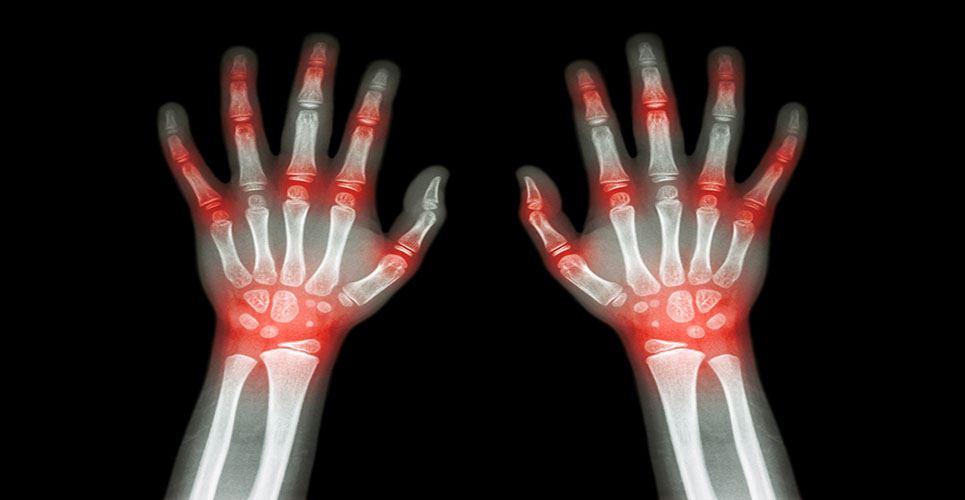teaser
AbbVie (NYSE: ABBV) has announced that the European Commission (EC) has approved an extension of the EC marketing authorisation for HUMIRA (adalimumab) for the treatment of polyarticular juvenile idiopathic arthritis (JIA) in children and adolescents aged two to 17 years who have had an inadequate response to one or more disease modifying anti-rheumatic drugs (DMARDs), expanded from its originally approved label for children aged four to 17 years that was granted by the EC in 2008.
“JIA commonly presents in early childhood between the ages of two to four years, and to date, approved therapeutic options have been limited,” said Daniel Kingsbury, medical director, Paediatric Rheumatology at Randall Children’s Hospital in Portland, Oregon. “The approval of new treatments is very exciting and welcomed news for our patients and their families, as well as for the physicians and the medical teams involved with their care.”
The EC approval for the label extension was supported by a study evaluating the safety and efficacy of HUMIRA in 32 children with moderately to severely active polyarticular JIA aged two to less than four years or aged four and above weighing less than 15 kilograms. This study data showed that HUMIRA was efficacious in this younger patient population. At weeks 12 and 24, 93.5% and 90% of patients, respectively, achieved at least 30% improvement in the paediatric ACR criteria (PedACR30).
“Ten years after its first approval for moderate to severe active rheumatoid arthritis, HUMIRA is still one of the most comprehensively studied biologics available to patients,” said John R. Medich, PhD, divisional vice president, Immunology Clinical Development, Global Pharmaceutical Research and Development, AbbVie. “Polyarticular JIA is particularly disruptive for these young patients. This extension of the indication upholds AbbVie’s ongoing commitment to research that helps meet the needs for patients of all ages around the world.”
JIA is an umbrella term for a group of serious, painful and potentially disabling chronic arthritis conditions that occur before the age of 16 that affect as many as four per 1000 children worldwide. Polyarticular JIA is a subtype of JIA that affects five or more joints, and symptoms include painful, swollen and tender joints, limping, morning stiffness, decreased activity and a reluctance to use an arm or a leg. For a young child, these physical symptoms and limitations can have a significant impact on daily life activities. Studies have shown that over one-third of JIA patients have active, ongoing disease into adulthood.
About M10-444
M10-44 is an international, multicenter, open-label study of patients with moderate-to-severe polyarticular JIA in the United States (including Puerto Rico) and the European Union. The study assessed the safety of HUMIRA – given subcutaneously every other week for a minimum of 24 weeks – as measured by the incidence of serious adverse events and adverse events over the course of the study. Patients received 24 mg/m2 body surface area (BSA) of Humira up to a maximum of 20 mg every other week as a single dose via subcutaneous injection for at least 24 weeks. All paediatric patients were aged two to less than four years or aged four years and above weighing less than 15 kilograms.
Results from this study showed that the safety profile of HUMIRA in younger JIA patients aged two to less than four years or aged four and older weighing less than 15 kilograms was similar to that seen in previous clinical trials for Humira. Additionally, HUMIRA was efficacious in this younger JIA patient population, demonstrating PedACR 30/50/70/90 response rates of 94%/90%/61%/39% at 12 weeks and 90%/83%/73%/37% at 24 weeks.
PedACR responses in children with JIA are determined by measuring changes in six core criteria defined by the American College of Rheumatology, which are: the number of joints with active arthritis, the number of joints with limited movement, the physical functioning, the level of inflammation measured by a blood test, the physician’s global assessment of disease activity, and the parent’s assessment of overall child’s well-being. For example, achieving a PedACR 30 means that the child’s disease has improved by 30%.

